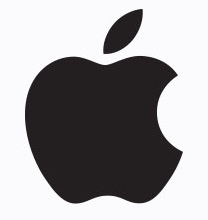For me these have entered into my must haves
- BetterDisplay: For better scaling support for external monitors
- Rectangle: To be able to use a mouse to drag and snap windows
- Pixea: To be able to double click an image with a mouse in any folder and then use arrow keys or scroll wheel to proceed to the next file in the folder. Replaced the stock preview with this.
Something I’m looking for now is the ability to use the forward and back buttons on my mouse when I’m in Finder and want to go back to the previous folder I was in. Doesn’t work in Safari either. Works in good old dependable Firefox though.
And separate volume controls for each applications.


When an application wants to create a file, who does it ask for permission? Who facilitates finding a spot on the disk for the new files to go?
Frankly I can’t speak to the overhead for managing it but the OS is aware and could very much keep track of which applications own what. As for shared directories if they know the specific app owner obviously just remove files from app A but keep the directory if app B also uses it.
As for configuration files and save data, these are generally located in consistent places but ultimately that’s going to be a responsibility of the app developer to keep with standards for where those config files go so they can persist through reinstalls.
‘Do you want to delete this application completely, or would you like to keep configuration files and save data?’
But Apple doesn’t really care, they want everything to feel seamless and look pretty. Actual functionality is a second thought.
It has permission via certificates and writes/copies either via bin commands (cp) or the user does it (drag app to applications). Applications don’t own files within macOS. It’s UNIX methodology where it’s a user/group/everyone situation. Often files will be owned by “system” or the logged in user that installs them. The OS would need to snapshot what is done during installation (which is actually done by packaging utilities like composer) but this is also prone to error because it tracks all changes during installation, so if you’re modifying files with other apps while the current installer is running in the background it will capture that. And I think you’d be surprised how many apps keep files in non-traditional places.
It’s just not as straight-forward as you think it is and no OS really does this will. Windows uninstaller often misses a lot of registry keys and programdata/appdata files. Linux will only uninstall what it install during the apt/dnf/whatever process. Even iOS leaves things behind like folders in Files.